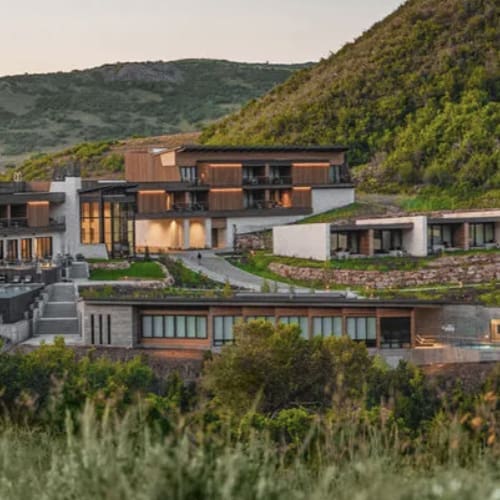 We all aspire to make our places of work as prestigious and renowned as possible so they can attract those high-net-worth international guests. Plus, it doesn’t hurt in times of crisis to be able to draw from a diverse range of feeder territories to keep a healthy bottom line. But there is a fallacy in trying to overreach beyond what your hotel is capable of.
We all aspire to make our places of work as prestigious and renowned as possible so they can attract those high-net-worth international guests. Plus, it doesn’t hurt in times of crisis to be able to draw from a diverse range of feeder territories to keep a healthy bottom line. But there is a fallacy in trying to overreach beyond what your hotel is capable of.
This is particularly true as the pandemic continues to stymie the international travel industry. The longer it continues to plague hotel owners’ wallets through an inability for foreign guests to visit your locale (or through a media-driven fear of journeying abroad), the more new behaviors will permanently change people’s outlook on travel.
Even before the crippling shutdowns in March 2020, the danger was that if you tried to push broad awareness across too many regions and too many different countries, you would inevitably end up compromising on how well you reached and serviced those guests arriving from your core markets. Coming from the advertising world before formally entering hospitality and starting a consultancy, I can firmly state that your key feeder markets became as they are because your teams reinforced a great onsite experience with consistent marketing efforts. Let the advertising slide and those guests may soon forget to choose your hotel for their upcoming corporate meeting or special occasion.
With the prospects for fully open borders now a far-off dream for many hotels and resorts, how does a property’s senior brass accept that most of their revenues will be locally driven for years to come? How do you know when your resort has only regional appeal and will be hard-pressed to ever again reenter the international marketplace? (As an aside, I say resort here to emphasize the rural nature of all this, but similar points can be drawn for urban properties.)
Regional state of mind
Whether it’s a lack of direct air routes from desired markets that have allowed travel in a post-Covid world, being situated a great distance from major airports, a lack of iconic nearby attractions, currently incongruent product positioning for where you want to target, too little capex to win any design awards or a slew of other factors, there are often many things beyond your control that hinder your awareness outside of the territories where you are already known.
From experience, the first step is oftentimes to accept that it’s entirely okay not to be an internationally exalted, bucket list-worthy property – one that people will go through all the Covid-related hoopla to visit from afar. Once you get to the senior planning level, though, what is within your control is to honestly analyze the current situation as to what territories you will realistically be able to attract then develop a plan with reasonable expectations for growth.
In more ways than one, what I’m addressing here is how the college textbooks are doing a disservice to the term ‘market penetration’ because what’s taught in classroom terms does not echo the reality of balancing a budget down to the penny. I hear this term thrown around like it’s nothing, and yet extending your awareness into any new demographic niche is a truly dogged affair. Particularly in a time when marketing allocations are threadbare and many guests are too afraid to leave their own houses, a hotel organization must be exceedingly scrupulous in how it selects new territories to target while also sustaining market share amongst the core audience and factoring in the demands of ownership.
A Canadian example
From an assignment early this year working as an asset manager for an independent resort in British Columbia, I can offer several less-abstract tips to aid in your understanding. Not located within driving range of the primary international hub of Vancouver nor within the ski destination mecca of Whistler meant that building a following outside of the local area was extremely hard to get off the ground.
So, how did we initiate growth out of this niche? As a start, we had to give guests an unforgettable reason for visiting. As a mountaintop resort, the jaw-dropping views were enough to merit a one-night stay but increasing LOS and return guests meant we needed another pillar to hang our hat. The decision was to become a food destination with exquisite cuisine to make every meal incredible and an extraordinary wine cellar focused on the best of the province. Let me just say that this wasn’t easy!
Next, collaboration was essential. Our public relations arm worked closely with the DMO to develop stories highlighting the best of the area paired with our resort, all with the broad goal of developing awareness nationwide and into the lucrative West Coast states of Washington, Oregon and California. We also joined an international loyalty association to help gain some notice in Western Europe.
While this was definitely a more indirect play for revenue, it helped to diversify our guest origin percentages in order to not be entirely dependent on the local feeder market. Plus, these visitors were hardly ever short lead; they also had a significantly longer LOS than hyper-local staycations and more often than not reserved our upper-tier room products. For a small resort like this one, we’re not talking about a ton of rooms here, but enough to still make the whole endeavor profitable – a small win is still a win.
Thirdly, with these two projects tackled, assigning budget for breaching new markets became a much more focused discussion. Beyond campaigns to inform the local market about what’s new on property and periodic promotions to sustain their interest, we set our sites on Vancouver as the nearest metropolis with high wage-earners and mostly through digital channels so we could stay nimble, have transparent data on how the audience interacts and work within a tight budget. Concurrent to this, we engaged qualified media representatives to experience the resort so they could write for our target demographic of middle-aged vacationers or wealthier retirees.
All told, this niche extension was two years in the making to both align all of our underlying operations so that we had an impactful reason to visit and to understand this target demographic for maximum appeal. Needless to say, it paid off once the coronavirus hit and the property suddenly became top of mind for British Columbians who could no longer fly anywhere across the Pacific. Obviously, some details are lost in the summary, but I applaud any hotelier who has had similar success in making an unwaveringly regional resort into something more than what it was destined to be.
While regional resorts experienced booming occupancies during the summer of Covid when everyone was thinking local, it’s nevertheless important to continually refine your hotel’s raison d’être in order to sustain return visits and regional interest long after borders reopen.


















